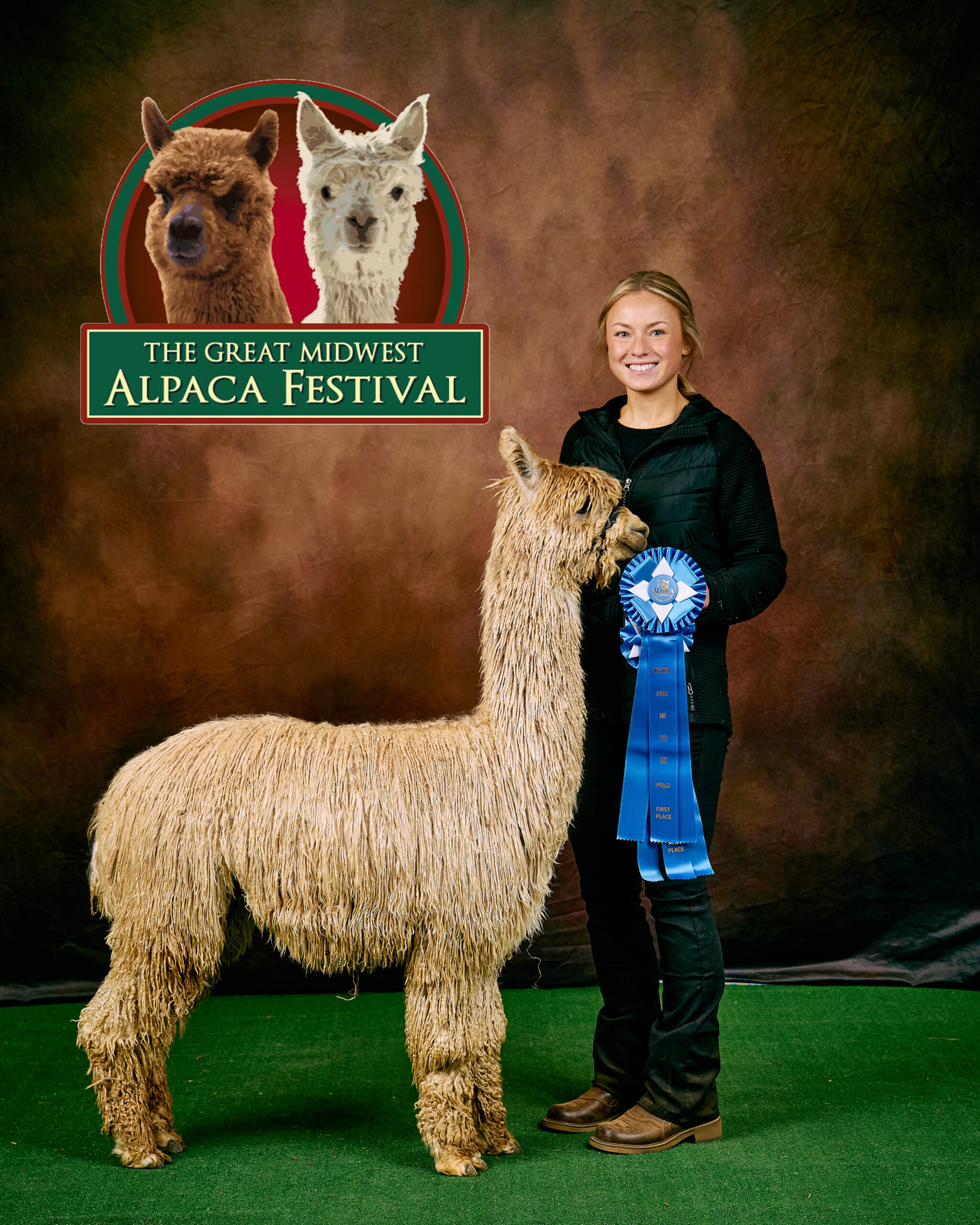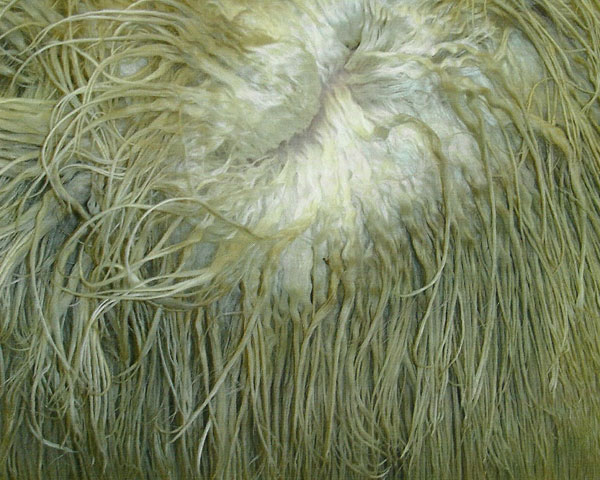Alpaca Facts
History
Alpacas appeared on earth first in the Northern Hemisphere and migrated across the Bering straight to where they now live, South America. Alpacas and other camelids were the most important resources of ancient peoples in South America. Cloth was currency to these people. A person’s social status could be easily seen in how finely woven his or her clothes were. The Spanish Conquest almost wiped out 90% of the fine alpacas being bred by ancient cultures. 1980 was the first time alpacas were imported to the U.S. and they were all Huacayas. Suris did not arrive here until 1991.
Anatomy/Habits
- Alpacas come in two types, Huacaya and Suri.
- Alpaca gestation lasts about 11.5 months.
They live about twenty years. - Alpacas are ruminants and chew a cud.
- Alpacas weigh between 100 and 200 pounds and stand about 36 inches at the shoulder.
- Alpacas have split feet with pads on the bottom like dogs and toenails in front. The toenails must be trimmed if the ground isn’t hard enough where they are living to wear them down.
- Alpacas do not have teeth in their upper palette.
- Alpacas’ lower teeth have to be trimmed because they keep growing. Alpacas are some of the most efficient eaters in nature. They won’t overeat and they can get 37% more nutrition from their food than sheep can.
- Alpacas always poop in the same place. They line up to use these communal dung piles.
- Alpacas hum. Some say it is from contentment but it seems to be broader than that. Humming is an outward display of emotions.
- Alpacas pronk when happy. This is a sort of bouncing, all-four-feet-off-the-ground skip like a gazelle might do.
- Male alpacas orgle when mating with females. This sound actually causes the female alpaca to ovulate. An alpaca pregnancy is almost a year long.
- Alpaca crias are not usually born later than 2 in the afternoon. This is because in their native habitat, it is key for them to dry off before the cold mountain night starts.
- Alpacas come in at least twenty two natural colors, depending on who you ask the number goes higher. They come in more natural colors than any other animal.

See More Pictures

FLEECE/FIBER
- Alpacas are sheared once a year to collect fiber without harm to the animal
- Huacaya fiber stands out perpendicular to the skin while Suri (pictured) hangs down vertically in locks.
- Is seven times warmer than sheep’s wool
- Can be extremely fine, as fine or finer than cashmere.
- Has a beautiful silky sheen with high visual appeal.
- Is more abrasion resistant than Merino wool.
- Has a higher tensile strength than wool.
- Contains very little lanolin, oil or grease and so does not have an unpleasant odor
- Does not retain water and resists solar radiation
- Alpaca fiber can be carded and blended with other natural and/or synthetic fibers
- Alpaca fiber can be easily dyed any color while keeping its lustrous sheen.
- Alpaca fiber is versatile and uses range from fine, next-to-skin garments to upholstery and carpet.
- Alpaca fiber will not burn.
GREEN ASPECTS
- You can keep far more alpacas on the same amount of land then sheep because they are more efficient eaters.
- Because of alpacas’ foot anatomy, they disrupt soil far less than other grazers and thus create less erosion and runoff.
- Alpacas are healthy grazers and do not decimate natural vegetation like goats
- Alpacas can eat native grasses and don’t need you to plant a monocrop for them – no need to fertilize a special crop!
- Chemical use is decreased.
- Alpacas do not pull up plants by the roots as cattle do. This keeps the soil intact and decreases erosion.
- Alpacas weigh a lot less than other livestock such as cows. Alpacas generally weigh only 100-150 pounds. Cattle weigh a thousand pounds or more and compress the soil far more.
- A cow consumes 10% of its body weight in water per day. Alpacas need just one half to three quarters of a gallon per one hundred pounds body weight per day.
- Alpaca beans (manure) make excellent fertilizer and alpacas tend to defecate in only a few places in the paddock.

